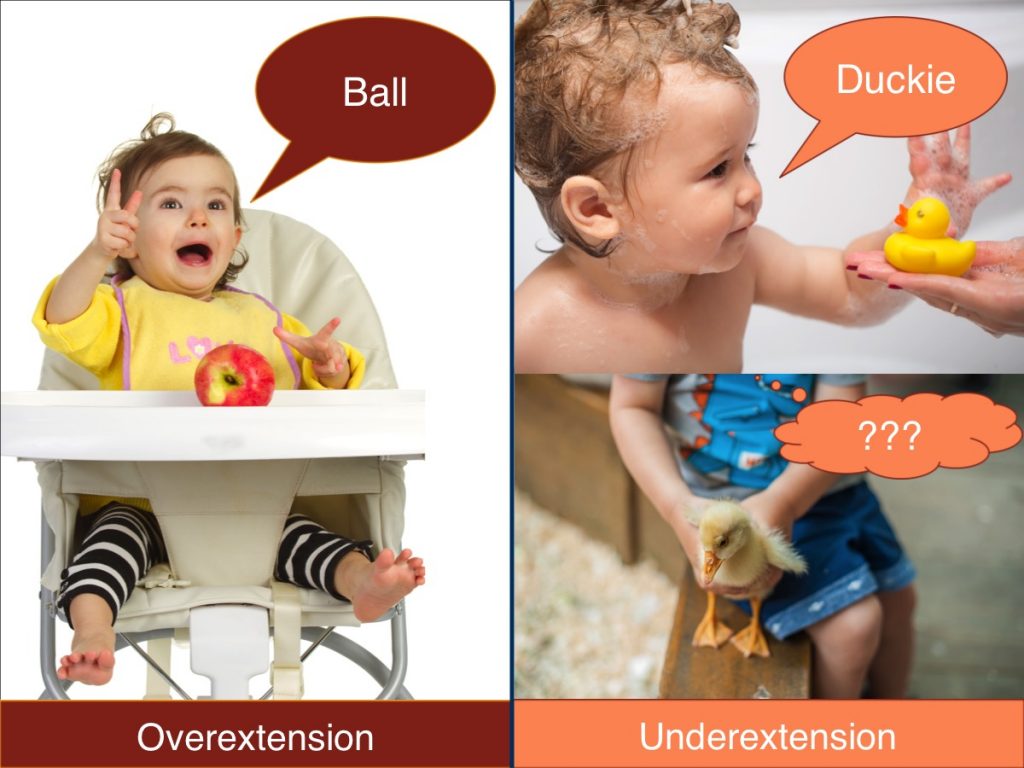
Children also use their knowledge about social interactions to learn new words. Around 10 months of age, children begin to engage in joint attention. Joint attention is when two people are attending to the same object or event. For example, if a caregiver looks at a bottle, the child may follow the caregiver’s eye gaze to see what the caregiver is looking at. If the caregiver labels the bottle and describes it, the child will begin to learn the meaning of the word “bottle.”
Children are good at using joint attention as a clue to what adults are talking about. Children’s ability to follow eye gaze and use joint attention is related to their vocabulary growth. Children who spend more time following eye gaze tend to have larger vocabularies. Eye gaze is an important cue for communicating with children.
In addition to non-verbal cues like eye gaze, caregivers’ language also helps children learn. Younger children learn best when they listen to infant-directed speech. Talking often and in a playful way and using new and different words are other strategies for building language. Offering choices and asking open-ended questions build language too.
Research shows that children use different strategies to learn words. At first, children’s use of words may be quite different compared to adults’. They may use the word “ball” to describe any round-shaped object, like an apple, marble, or egg. Researchers call this overextension. Or they might only say “ducky” when they see their yellow rubber duck at bath time. But they don’t say “ducky” when they see another rubber duck or a live duck. This is called underextension. These behaviors are normal! As children learn more about language and the world, they use words in a more adult-like manner.
-
- Back-and-forth or contingent interactions
- exchanges where a caregiver times her responses to a child’s behavior
- Canonical babbling
- producing the same consonant and vowel over and over, such as dadada
- Infant-directed speech
- a special tone and style of speech used to talk to young children. It’s also called parentese
- Joint attention
- shared attention between social partners to an object or event
- Overextension
- using a word to describe more object categories than it actually represents
- Underextension
- failing to extend a word to other objects in the same category
- Vocabulary spurt
- rapid growth in word learning